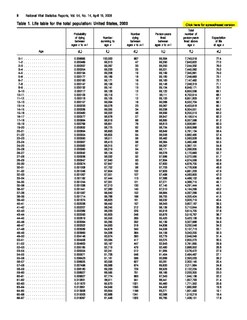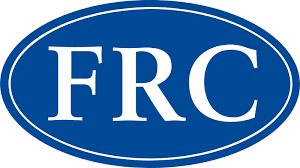
An actuary is a business professional who deals with the measurement and management of risk and uncertainty. The name of the corresponding field is actuarial science. These risks can affect both sides of the balance sheet and require asset management, liability management, and valuation skills. Actuaries provide assessments of financial security systems, with a focus on their complexity, their mathematics, and their mechanisms.

Actuarial science is the discipline that applies mathematical and statistical methods to assess risk in insurance, finance, and other industries and professions. More generally, actuaries apply rigorous mathematics to model matters of uncertainty.

The Casualty Actuarial Society (CAS) is a professional society of actuaries specializing in property and casualty insurance.

The Government Actuary’s Department (GAD) provides actuarial solutions including risk analysis, modelling and advice to support the UK public sector. It is a department of the Government of the United Kingdom.
The Institute of Actuaries was one of the two professional bodies which represented actuaries in the United Kingdom. The Institute was based in England, while the other body, the Faculty of Actuaries, was based in Scotland. While the Institute and Faculty of Actuaries were separate institutions, they worked very closely together, and their professional qualifications and actuarial standards were identical. On 25 May 2010, voting members of the Institute who took part in a ballot voted to merge the Institute with the Faculty, thus creating the Institute and Faculty of Actuaries, which came into being on 1 August 2010. The Institute of Actuaries ceased to exist on that date.
Enterprise risk management (ERM) in business includes the methods and processes used by organizations to manage risks and seize opportunities related to the achievement of their objectives. ERM provides a framework for risk management, which typically involves identifying particular events or circumstances relevant to the organization's objectives, assessing them in terms of likelihood and magnitude of impact, determining a response strategy, and monitoring process. By identifying and proactively addressing risks and opportunities, business enterprises protect and create value for their stakeholders, including owners, employees, customers, regulators, and society overall.
The Faculty of Actuaries in Scotland was the professional body representing actuaries in Scotland. The Faculty of Actuaries was one of two actuarial bodies in the UK, the other was the Institute of Actuaries, which was a separate body in England, Wales and Northern Ireland. While the Faculty of Actuaries and the Institute of Actuaries were separate institutions, they worked very closely together, and the professional qualifications and professional standards for actuaries were identical in each of them. On 25 May 2010, voting members of the Faculty who took part in a ballot voted to merge the Faculty with the Institute of Actuaries, thus creating the Institute and Faculty of Actuaries which came into being on 1 August 2010, superseding the Institute of Actuaries which ceased to exist on that date.

The American Academy of Actuaries, also known as the Academy, is the body that represents and unites United States actuaries in all practice areas. Established in 1965, the Academy serves as the profession’s voice on public policy and professionalism issues.

The Financial Reporting Council (FRC) is an independent regulator in the UK and Ireland, responsible for regulating auditors, accountants and actuaries, and setting the UK's Corporate Governance and Stewardship Codes. The FRC seeks to promote transparency and integrity in business by aiming its work at investors and others who rely on company reports, audits and high-quality risk management.
Founded in 1888, the Actuarial Society, is the professional association of actuaries in the Netherlands. Nearly all Dutch actuaries are members.
Insurance in India refers to the market for insurance in India which covers both the public and private sector organisations. It is listed in the Constitution of India in the Seventh Schedule as a Union List subject, meaning it can only be legislated by the Central Government only.
The Conference of Consulting Actuaries (CCA) is a professional society of actuaries engaged in consulting in the United States and Canada, as opposed to those employed by insurance companies. CCA members assist their clients with respect to pension, health, and other employee benefit plans; life insurance; and property and casualty insurance.
James C. Hickman was an American actuary. He was internationally publicized for his work in actuarial education as well as being a major contribution in the development of the actuarial profession. He was a professor emeritus of business and statistics and former dean of the University of Wisconsin–Madison School of Business.
Bernard Benjamin was a noted British health statistician, actuary and demographer. He was author or co-author of at least six books and over 100 papers in learned journals.
The State Farm Research and Development Center opened in January 2005 at the University of Illinois’ Research Park. State Farm has been involved in academic programming, student assistance and research at U of I for over 35 years, but this facility allows for a captive audience of college interns working on projects to benefit the company as a whole, while students get to apply what they learn in class to real business problems.
Pension administration in the United States is the act of performing various types of yearly service on an organizational retirement plan, such as a 401(k), profit sharing plan, defined benefit plan, or cash balance plan. Increasingly, employers are also implementing these plan types in combination arrangements for greater contribution potential, such as the pairing of a cash balance plan with some variety of 401(k). The pension administration ensures that an organizational retirement plan neither discriminates against lower-level employees nor becomes an abusive tax shelter. Stress tests include the average benefits test, average deferral percentage, and minimum coverage. Yearly pension administration work involves filing a Form 5500 with the Internal Revenue Service (IRS). Organizations such as the National Institute of Pension Administrators and the American Society of Pension Professionals and Actuaries offer several professional designations to those who do this work. Pension Administration firms often rely on financial brokers for their business prospects, although they do have other referral sources. Some pension administration firms assign financial advisory work to an internal unit and also accept referrals from an independent broker network. These brokers are often associated with firms like Raymond James, Edward Jones Investments and Morgan Stanley. The brokers may be employees of these firms or independent contractors. The plan assets of the organizational retirement plans in question sometimes reside on a trading platform that the administration firm control. More often, large financial institutions that provide a variety of investment options for plan participants hold the assets. Large firms include Principal Financial Group, John Hancock Insurance, ING Group and Mass Mutual. Pension administrators often coordinate with public accounting firms, as the Employee Retirement Income Security Act of 1974 (ERISA) requires plans with more than one hundred participants to undergo an independent audit each year. For defined benefit plans, the pension administration firm must employ an actuary to certify the plan's present and future benefit liabilities and compliance with IRS minimum funding standards. Pension administration firms with a large block of defined benefit plans often directly employ an actuary. Firms that only work on a small collection of defined benefit plans tend to retain the actuary as an independent contractor. The actuary completes contribution calculations for the plan and provides a Schedule SB so that the administrators may file the yearly Form 5500. Without this Schedule the yearly filing for a defined benefit plan would be incomplete. Other than the IRS, organizational retirement plan operation and maintenance falls under the regulation of the United States Department of Labor.

The Institute and Faculty of Actuaries is the professional body which represents and regulates actuaries in the United Kingdom.

Philip Booth is a British economist. He is Dean of the Faculty of Education, Humanities and Social Sciences at St Mary's University, Twickenham and Senior Academic Fellow at the Institute of Economic Affairs. His primary areas of research and writing are social insurance, financial regulation and Catholic social teaching.
The actuarial credentialing and exam process usually requires passing a rigorous series of professional examinations, most often taking several years in total, before one can become recognized as a credentialed actuary. In some countries, such as Denmark, most study takes place in a university setting. In others, such as the U.S., most study takes place during employment through a series of examinations. In the UK, and countries based on its process, there is a hybrid university-exam structure.
Virginia Ruth Young is the Cecil J. and Ethel M. Nesbitt Professor of Actuarial Mathematics at the University of Michigan, and an expert on the mathematics of insurance.







